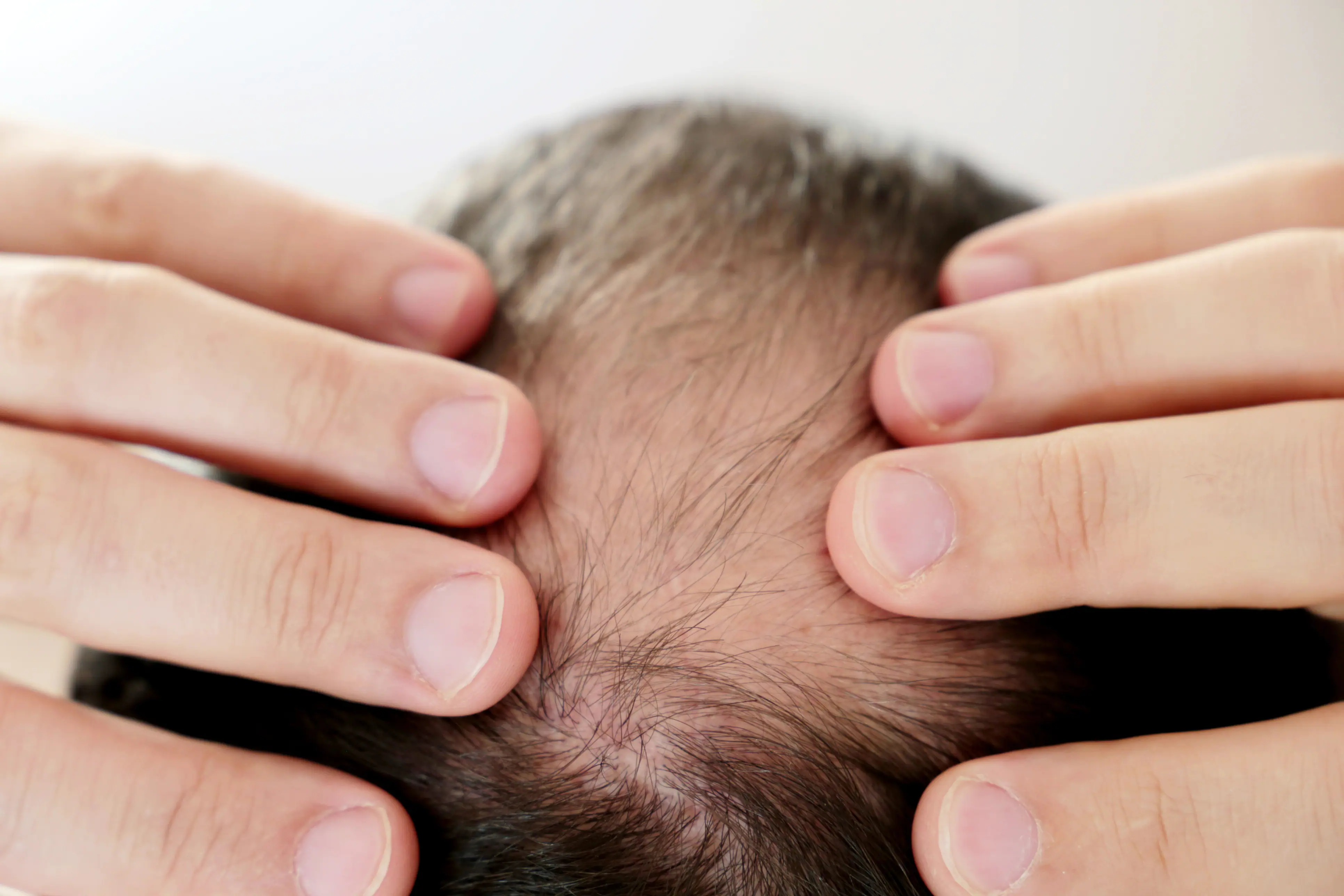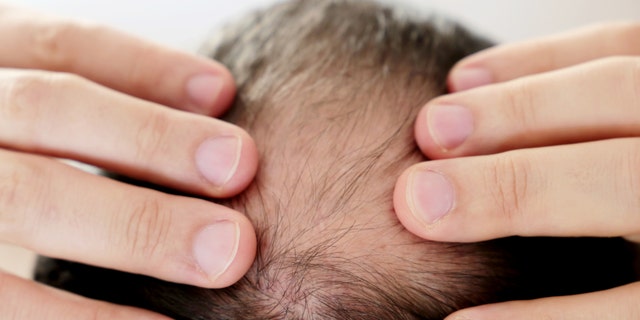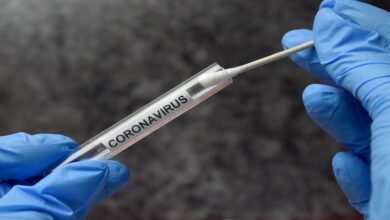Why can chronic stress result in hair loss? New research provides clues

[ad_1]
It’s well known that chronic stress can lead to hair loss, but how exactly stress causes hair loss has been a mystery — until now. A new study conducted by researchers at Harvard University may provide a clue.
In a study recently published in the journal Nature, researchers determined that a stress hormone keeps hair follicle stem cells in an “extended resting phase,” meaning the growth of new hair is put on hold for a longer amount of time than normal.

It’s well known that chronic stress can lead to hair loss, but how exactly stress causes hair loss has been a mystery — until now. A new study conducted by researchers at Harvard University may provide a clue. (iStock)
First, it’s important to understand the three stages of hair growth: growth, rest and degeneration. In the first state, hair follicle cells are activated and hair is continually produced, in the second, the hair stays in a state of rest but can still shed, and in the last stage — degeneration — hair falls out.
“During the resting phase, the stem cells are quiescent and hairs shed more easily. Hair loss can occur if the hairs shed and the stem cells remain quiescent without regenerating new tissue,” explains an accompanying press release on the study’s findings.
IS IT COVID-19, ALLERGIES, OR POST-VACCINATION SYMPTOMS? HOW TO TELL THE DIFFERENCE
The researchers specifically looked at the adrenal glands, which produce a stress hormone called corticosterone, and the connection to hair loss in mice. (Corticosterone in mice is thought to be the equivalent of the stress hormone cortisol that is produced in humans.)
The researchers surgically removed adrenal glands from the mice in the study. Later, they found that the hair follicles in the mice with the removed adrenal glands had a shorter resting phase but entered the growth phase more often. When they administered corticosterone to the mice, their hair growth was slowed to normal.
Over nine weeks, the researchers also administered corticosterone to mice whose adrenal glands were still intact. They observed that these mice had elevated corticosterone levels as well as reduced hair growth, finding that their hair follicles stayed in a rest phase for a longer amount of time than normal.
“The real surprise came when we depleted stress hormones. Under normal conditions, hair follicle regeneration slows over time – the resting phase becomes longer as the animals age. But when we removed the stress hormones under unstressed normal conditions, the stem cells’ resting phase became extremely short and the mice constantly entered the growth phase to regenerate new hair follicles and hairs throughout their life, even when they were old,” said Ya-Chieh Hsu, the Alvin and Esta Star Associate Professor of Stem Cell and Regenerative Biology at Harvard and senior author of the study, to Technology Networks.
FDA UPDATES MODERNA EUA IN BID TO SPEED ROLLOUT
The researchers shaved the mice whose adrenal glands were removed. Nineteen days later, they had a fully regrown coat, while the mice who did not have their adrenal glands removed and were also shaved were still mostly bald.
“So even the baseline level of stress hormone that’s normally circulating in the body is an important regulator of the resting phase. Stress essentially just elevates this preexisting ‘adrenal gland–hair follicle axis,’ making it even more difficult for hair follicle stem cells to enter the growth phase to regenerate new hair follicles,” Hsu explained in the accompanying press release on the study’s findings.
Once the link between the stress hormone and hair follicle stem cell activity was noted, the researchers then explored the biological mechanism behind the connection.
“We first asked whether the stress hormone was regulating the stem cells directly and checked by taking out the receptor for corticosterone, but this turned out to be wrong. Instead, we found that the stress hormone actually acts on a cluster of dermal cells underneath the hair follicle, known as the dermal papilla,” Sekyu Choi, another study leader, said in a statement.
“Dermal papilla is known to be critical for activating hair follicle stem cells, but none of the previously identified factors secreted from dermal papilla changed when stress hormone levels were altered. Rather, the stress hormone prevented dermal papilla cells from secreting Gas6, a molecule that the researchers showed can activate the hair follicle stem cells,” reads the release.
Though more research is needed, the study authors are hopeful that certain gene therapies could be possibly used in the future to combat hair loss in humans.
“Under both normal and stress conditions, adding Gas6 was sufficient to activate hair follicle stem cells that were in the resting phase and to promote hair growth,” Choi said. “In the future, the Gas6 pathway could be exploited for its potential in activating stem cells to promote hair growth. It will also be very interesting to explore if other stress-related tissue changes are related to the stress hormone’s impact on regulating Gas6.”
CLICK HERE FOR COMPLETE CORONAVIRUS COVERAGE
“When looking for factors that control stem cell behaviors, normally we would look locally in the skin. While there are important local factors, our findings suggest that the major switch for hair follicle stem cell activity is actually far away in the adrenal gland and it works by changing the threshold required for stem cell activation,” Hsu added.
“You can have systemic control of stem cell behavior located in a different organ that plays a really important role, and we are learning more and more examples of these ‘cross-organ interactions.’ Tissue biology is interconnected with body physiology. We still have so much to learn in this area, but we are constantly reminded by our findings that in order to understand stem cells in the skin, we often need to think beyond the skin.”
[ad_2]
Source link






